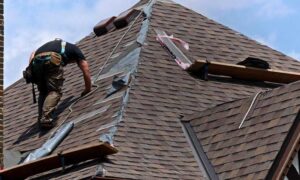The main culprit behind a leaky roof can be roof flashing, which craves your attention for your good only. Flashing prevents water from seeping into cracks, holes, and gaps. If you install it right, the perks will be enormous. Keep this part in mind whether you want to replace or repair your roof. Otherwise, your time, energy, and money will not add value. Do you wonder what part of the roof form shingles? Look at the intersections between the roof and other corners like vents, chimneys, walls, and skylights. The covering on these areas is flashing. If the gaps remain open, water will enter your roof, affecting its lifespan.
You can call experts like Kihle Roofing for flashing or entire roof repair and replacement work. Nevertheless, let’s understand flashing a little more.
Roof flashing materials
You come across many options, such as copper, lead, aluminum, and galvanized steel. Each has some unique qualities. It’s a no-brainer that copper is long-lasting and corrosion-resistance. High-end buildings usually invest in this material for chimney areas. But it can form a patina (green layer) due to an interaction with a chemical. It’s not a defect, but this can spoil its appearance. You get aluminum flashing in different sizes and thicknesses to suit your project’s requirements. Durability, lightweight, and corrosion resistance are some of the enormous strengths. You can use roll-formed flashing to bring down your cost.
Stainless steel can face any temperature maintaining its strength and traits. If you live in a hot region, you may need this one. Copper and aluminum may succumb to high temperatures. Some houses use galvanized steel around pipes and other portions for its rust and corrosion resistance abilities. Durability is not even a question. It can be your best bet to make your roof replacement project more affordable. Lead has also been around for many years for its ability to mimic the roof contour. The ability to resist fire and corrosion makes it more worthy of consideration. But some consider it to be toxic. Besides this, synthetic rubber is also an option. It can stand against UV rays, high temperatures, and atmospheric changes.
Varieties of roof flashing!
Valley, chimney, counter, and step are some standard flashing designs. Step flashing is more apt for vertical structures like walls and chimneys. Each piece of step flashing assumes a 90-degree angle, overlapping each other. You can pick valley flashing for systems like two-roof planes. This flashing style will help push water down the valley into the gutter to prevent leakage. As evident, chimney flashing is for the chimney area. It can be copper or aluminum material. Some houses use counter flashing to provide their roof with an extra protective layer to ward off water infiltration through walls, skylights, and chimneys. This flashing style can use rubber or metal.
Installing the proper roof flashing can solve many of your concerns related to ice dams, water damage, the roof’s lifespan, and more. Hence, if you plan roof repair or replacement, consider this part also. Your effort will increase your entire house’s life, making the exteriors look even more attractive. Find the right people to do the roofing job to reap all the benefits.



































